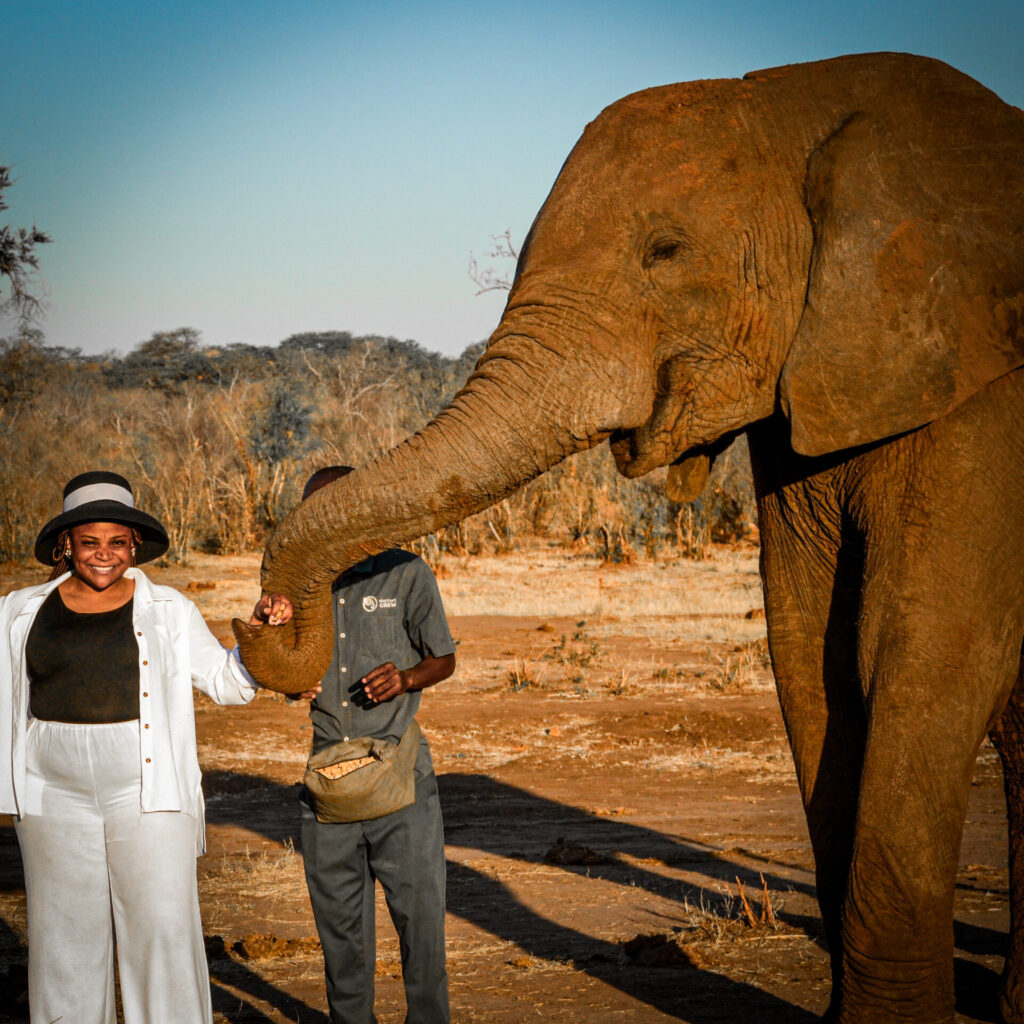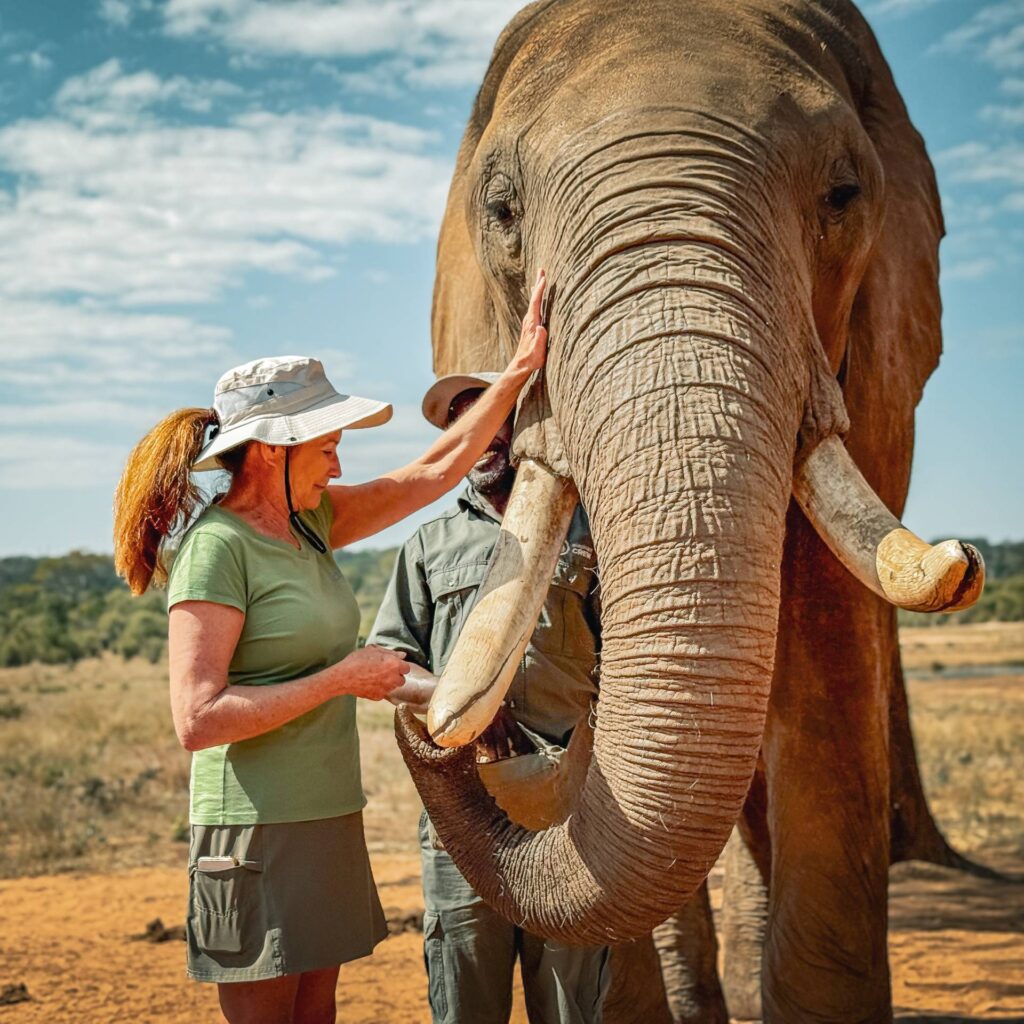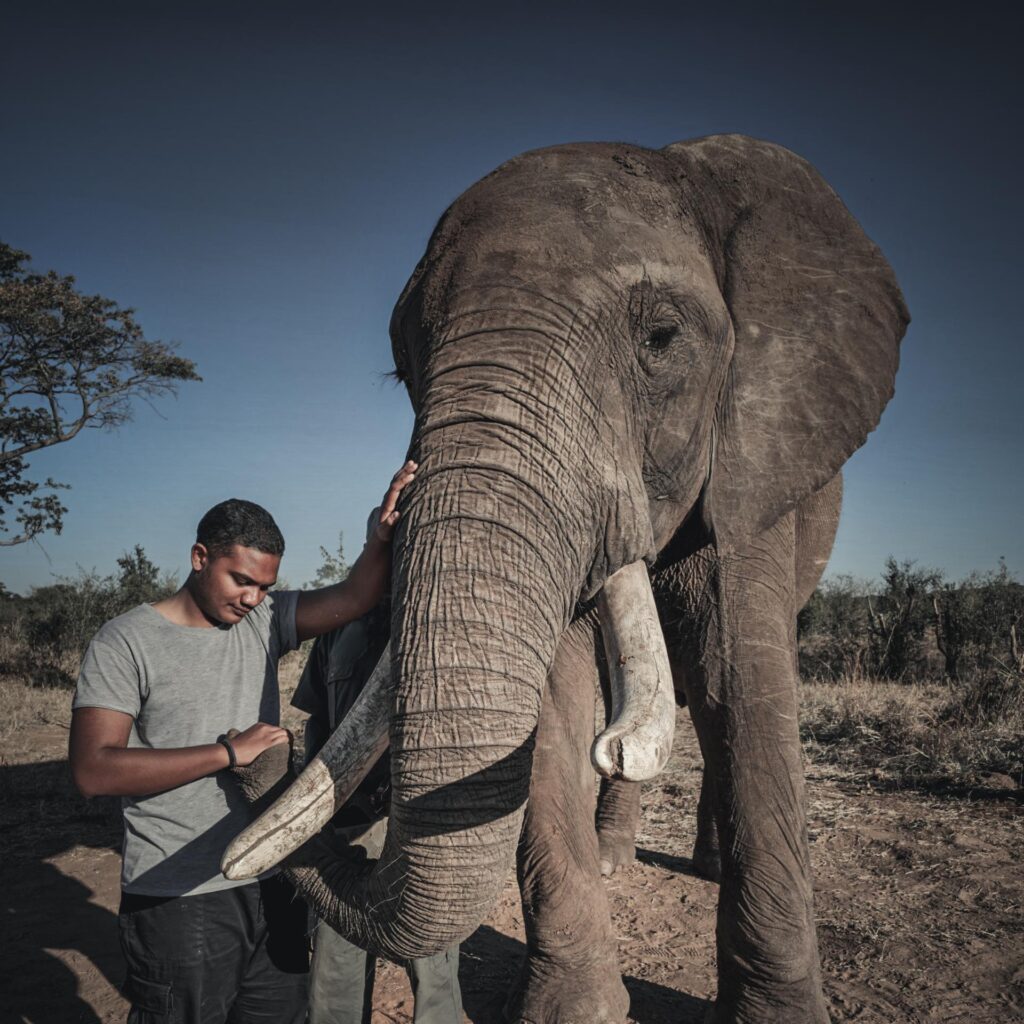
Elecrew
Research & Discovery
Articles dedicated to the Research & discovery of our elephants
Summary of Study: Differences in Mother–Infant Bond and Social Behavior of African Elephant Calves
This study compared African elephant calves raised in the wild (in situ) and in zoos (ex situ).
Mother–Calf Bond:
Wild calves stayed much closer to their mothers (mostly in physical contact). Zoo calves kept greater distances, showing more independence at an earlier age.General Behavior:
Zoo calves spent more time eating, using their trunks, and engaging in varied behaviors. Wild calves showed more affiliative contact and spent more time drinking and bathing.Social Behavior:
Wild calves only showed positive (affiliative) interactions. Zoo calves showed both affiliative and some agonistic (competitive) behaviors, though affiliative still dominated.Development:
Zoo calves appeared to develop faster, likely due to safe, resource-rich environments. Differences did not significantly increase between first and second zoo-born generations.
Conclusion:
Elephant calves in zoos grow up more independently and develop faster than in the wild, but still display natural social behavior. These findings support ongoing welfare-focused captive breeding, provided strong social bonds and enrichment are maintained.
Citation:
Hoerner, F. et al. (2023). Differences in Mother–Infant Bond and Social Behavior of African Elephant Calves Living In Situ and Ex Situ. Animals, 13(3051). https://doi.org/10.3390/ani13193051
Summary of Study: Social Interactions of Young African Elephants in Semi-Captive Conditions
This research examined how young African elephants (ages 3–8) living in a semi-captive, welfare-led environment in Victoria Falls interacted socially.
Social Bonds:
Elephants formed strong affiliative relationships, with frequent touching, trunk-to-mouth contact, and close companionship.Play Behavior:
Play was common, especially among younger calves, and played an important role in learning social and physical skills.Hierarchy:
A loose dominance hierarchy existed, but aggression was rare and mostly ritualized (non-harmful). Affiliative behaviors outweighed competitive ones.Welfare Insight:
The elephants showed a natural range of behaviors similar to those observed in wild herds, suggesting that a well-managed semi-captive system can support healthy social development.
Conclusion:
Young elephants in semi-captive, welfare-focused care can thrive socially, displaying natural play and bonding behaviors while maintaining group harmony. This supports the role of welfare-centered facilities in elephant conservation and education.
Citation:
Araceli, M. et al. (2023). Social Interactions of Young African Elephants Living Under Semi-Captive Conditions in a Welfare-Centred Facility in Victoria Falls, Zimbabwe. Animals, 13(1609). https://doi.org/10.3390/ani13101609
Summary of Study: Day and Night Behavior of Semi-Captive African Elephants
This study investigated how semi-captive African elephants in a welfare-led facility in Victoria Falls behaved across day and night.
Activity Patterns:
Elephants were more active at night than during the day, showing high levels of walking, foraging, and social interactions after dark.Social Behavior:
Affiliative behaviors (e.g., trunk touches, close following) dominated both day and night. Play was more frequent in the evening. Aggressive interactions were very rare.Welfare Implications:
The elephants displayed a broad, natural range of behaviors similar to wild elephants, indicating that their welfare needs were being met.Management Insight:
Continuous observation (day and night) provides important data to ensure elephants in semi-captive care are thriving socially and physically.
Conclusion:
Semi-captive elephants remain socially and physically active at night, with natural behavior patterns strongly resembling wild herds. These findings highlight the value of welfare-centered management in supporting elephant well-being.
Citation:
Williams, E. et al. (2023). Day and Night Time Differences in the Behaviour of Semi-Captive African Elephants in a Controlled, Free-Contact, Welfare-Led Management System. Animals, 13(2607). https://doi.org/10.3390/ani13152607
Summary of Study: Intentional Gestural Communication in African Elephants
This study explored whether semi-captive African elephants in Victoria Falls use gestures intentionally to achieve specific goals.
Key Findings:
Audience Directedness: Elephants gestured almost exclusively when a human experimenter was present and attentive.
Persistence: They continued gesturing when their goal (receiving apples) was only partly met.
Elaboration: When their goal was not met, elephants introduced new gestures rather than repeating old ones.
Welfare & Cognitive Insight:
Elephants demonstrated goal-directed intentionality across many gesture types—similar to great apes—indicating advanced socio-cognitive skills.
Conclusion:
Elephants flexibly use a wide repertoire of gestures to communicate intentionally, suggesting that complex, language-like communication evolved independently in elephants and apes.
Citation:
Eleuteri, V. et al. (2025). Investigating intentionality in elephant gestural communication. R. Soc. Open Sci. 12:242203. https://doi.org/10.1098/rsos.242203
Help us strengthen the Herd
Join the Elephant Crew! Volunteer Today and Make a Difference for These Majestic Creatures.





